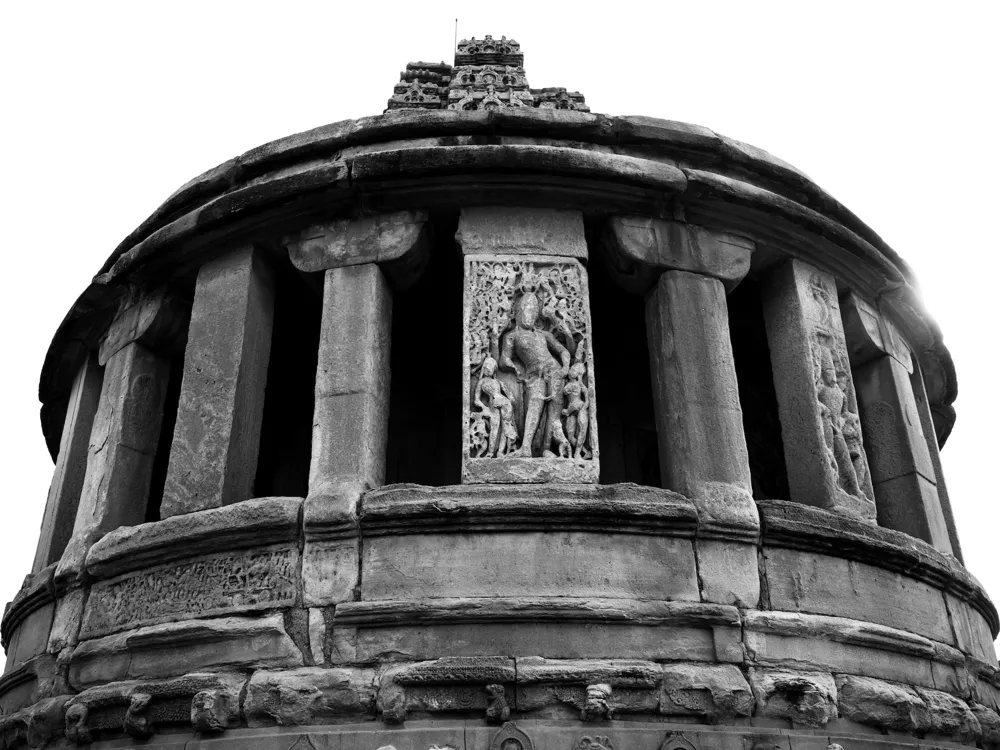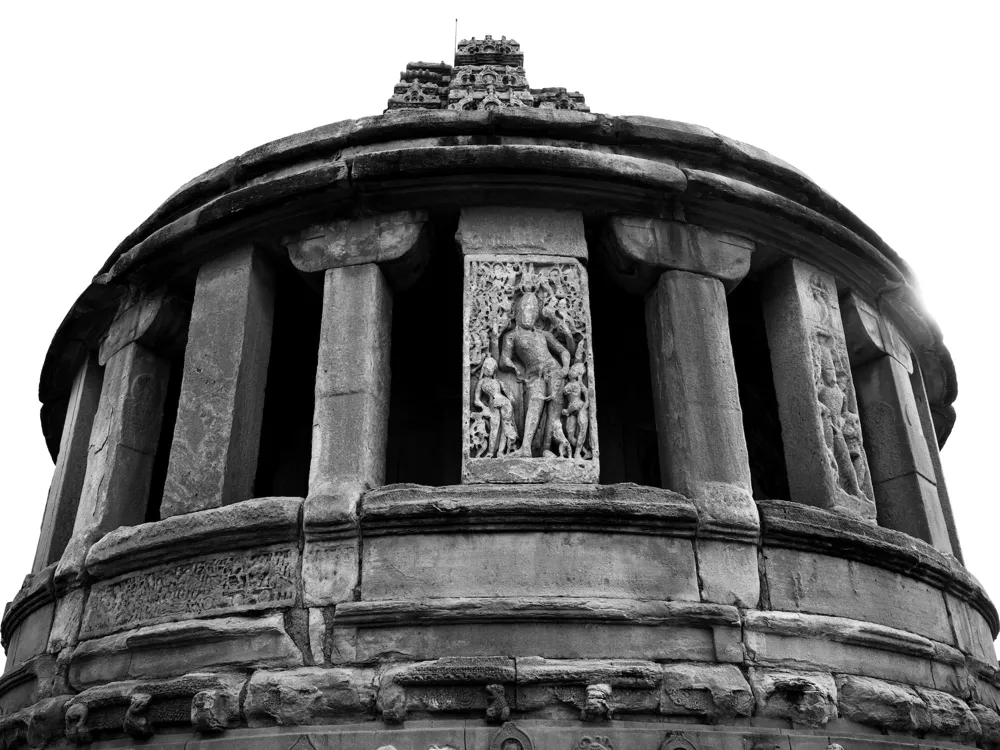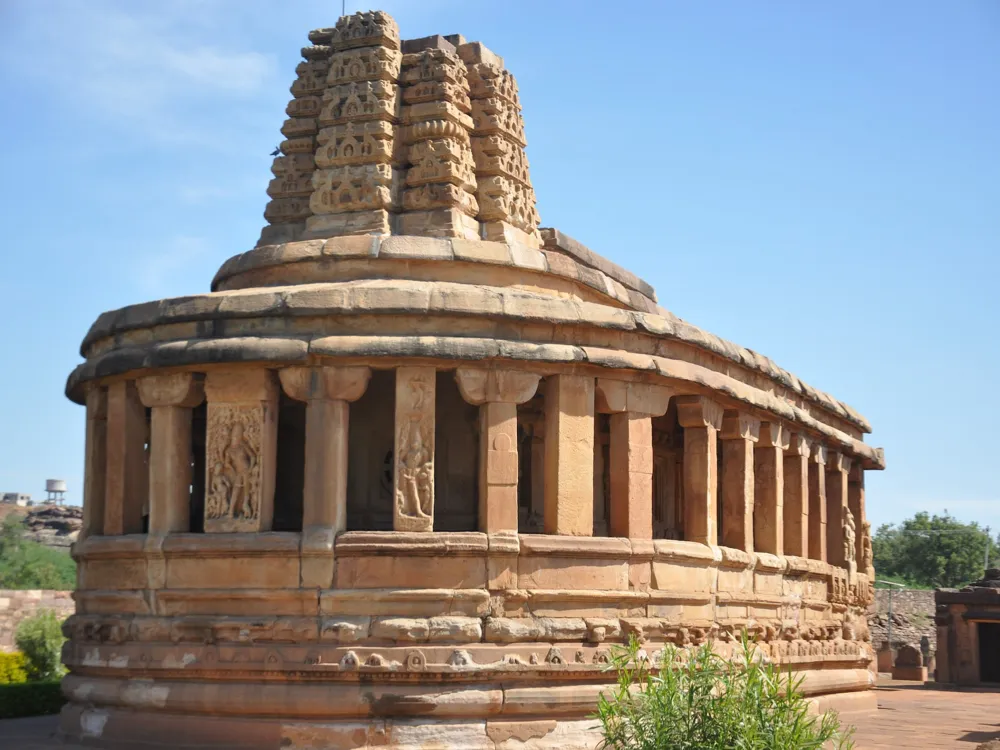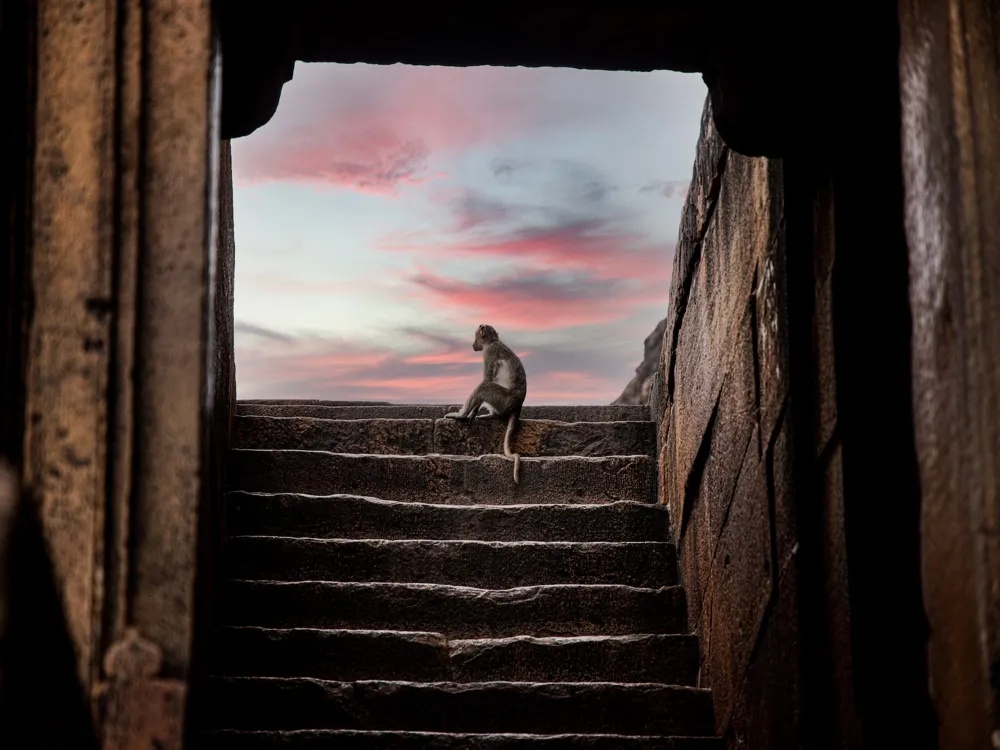Nestled in the historic town of Aihole in Karnataka, India, Badigera Gudi is an ancient temple that stands as a testament to India's rich cultural and architectural heritage. Aihole, often referred to as the 'Cradle of Indian Architecture,' hosts over 120 temples, with Badigera Gudi being one of the most remarkable ones. This temple, dating back to the 7th century, is an exemplary showcase of the early stages of Hindu temple architecture in South India. The significance of Badigera Gudi lies not only in its antiquity but also in the intricate carvings and sculptures that adorn its walls. These carvings depict various Hindu deities and mythological scenes, offering a glimpse into the religious and cultural mindset of the era. The temple, primarily dedicated to Lord Shiva, features a sanctum sanctorum (garbhagriha), a main hall (mandapa), and an entrance porch (mukhamandapa), typical of the Dravidian style of architecture. Visitors to Badigera Gudi are immediately struck by its simplicity and elegance. The temple, built from local sandstone, has withstood the test of time, and its rustic charm continues to draw history enthusiasts, art lovers, and spiritual seekers from across the globe. The temple's location in Aihole, a site of immense historical significance, adds to its allure, making it a must-visit for anyone interested in exploring the roots of Indian temple architecture. The architectural brilliance of Badigera Gudi is a reflection of the ingenuity and skill of the artisans of the Chalukya dynasty, under whose patronage this temple was constructed. The Chalukyas were known for blending various architectural styles, and Badigera Gudi is a fine example of this synthesis. The temple combines elements of both the Nagara (North Indian) and Dravidian (South Indian) styles, creating a unique aesthetic that sets it apart from other temples in the region. The temple's design is characterized by its simplicity and lack of ostentation, focusing instead on symmetry and proportion. The garbhagriha houses a Shiva lingam, a symbol of Lord Shiva, and is surmounted by a simple, yet elegant, tower (shikhara). The mandapa, with its pillared hall, provides a spacious area for devotees to gather and offers a stunning display of sculptural work. One of the most striking features of the temple is its intricate carvings and bas-reliefs, which cover almost every inch of the temple's exterior. These carvings include depictions of Hindu deities, mythological creatures, and scenes from Hindu epics. The skill and attention to detail evident in these carvings are a testament to the high level of craftsmanship achieved during the Chalukyan period. The ideal time to visit Badigera Gudi is between October and March when the weather is pleasant, making it conducive for exploration and photography. Visitors are advised to dress modestly and remove footwear before entering the temple premises, in respect of the local customs and traditions. Opting for a guided tour can greatly enhance the experience, as knowledgeable guides provide insights into the temple's history and architecture. Badigera Gudi in Aihole is well-connected by road. The nearest major city is Hubli, which is approximately 140 kilometers away. Visitors can reach Hubli by airport or train and then take a bus or hire a taxi to Aihole. The journey through the countryside offers a glimpse into the rural landscape of Karnataka, making the travel a part of the overall experience. Read More:Overview of Badigera Gudi, Aihole, Karnataka
Architecture of Badigera Gudi
Tips When Visiting Badigera Gudi
Best Time to Visit
Cultural Etiquette
Guided Tours
How To Reach Badigera Gudi
Badigera Gudi
Aihole
Karnataka
NaN onwards
View aihole Packages
Aihole Travel Packages
View All Packages For Aihole
Top Hotel Collections for Aihole

Private Pool

Luxury Hotels

5-Star Hotels

Pet Friendly
Top Hotels Near Aihole
Other Top Ranking Places In Aihole
View All Places To Visit In aihole
Faq on Aihole
What is Badigera Gudi Aihole?
Badigera Gudi Aihole is an ancient temple located in the town of Aihole in Karnataka, India. It is a significant architectural and historical site dating back to the Chalukya dynasty.
When was Badigera Gudi Aihole built?
Badigera Gudi Aihole was constructed during the Chalukya period, believed to be in the 7th or 8th century CE.
What is the architectural style of Badigera Gudi Aihole?
The temple exhibits the early Chalukyan architectural style, characterized by its simple yet elegant design, featuring intricate carvings and sculptures.
What is the significance of Badigera Gudi Aihole?
Badigera Gudi Aihole holds historical and cultural significance as it represents the architectural prowess of the Chalukya dynasty and provides insights into ancient Indian temple architecture.
Is Badigera Gudi Aihole open to the public?
Yes, Badigera Gudi Aihole is open to the public for visits. However, it is advisable to check for any restrictions or entry fees before planning a visit.
View aihole Packages
Aihole Travel Packages
View All Packages For Aihole
Top Hotel Collections for Aihole

Private Pool

Luxury Hotels

5-Star Hotels

Pet Friendly
Top Hotels Near Aihole
Other Top Ranking Places In Aihole
Faq on Aihole
What is Badigera Gudi Aihole?
Badigera Gudi Aihole is an ancient temple located in the town of Aihole in Karnataka, India. It is a significant architectural and historical site dating back to the Chalukya dynasty.
When was Badigera Gudi Aihole built?
Badigera Gudi Aihole was constructed during the Chalukya period, believed to be in the 7th or 8th century CE.
What is the architectural style of Badigera Gudi Aihole?
The temple exhibits the early Chalukyan architectural style, characterized by its simple yet elegant design, featuring intricate carvings and sculptures.
What is the significance of Badigera Gudi Aihole?
Badigera Gudi Aihole holds historical and cultural significance as it represents the architectural prowess of the Chalukya dynasty and provides insights into ancient Indian temple architecture.
Is Badigera Gudi Aihole open to the public?
Yes, Badigera Gudi Aihole is open to the public for visits. However, it is advisable to check for any restrictions or entry fees before planning a visit.


















